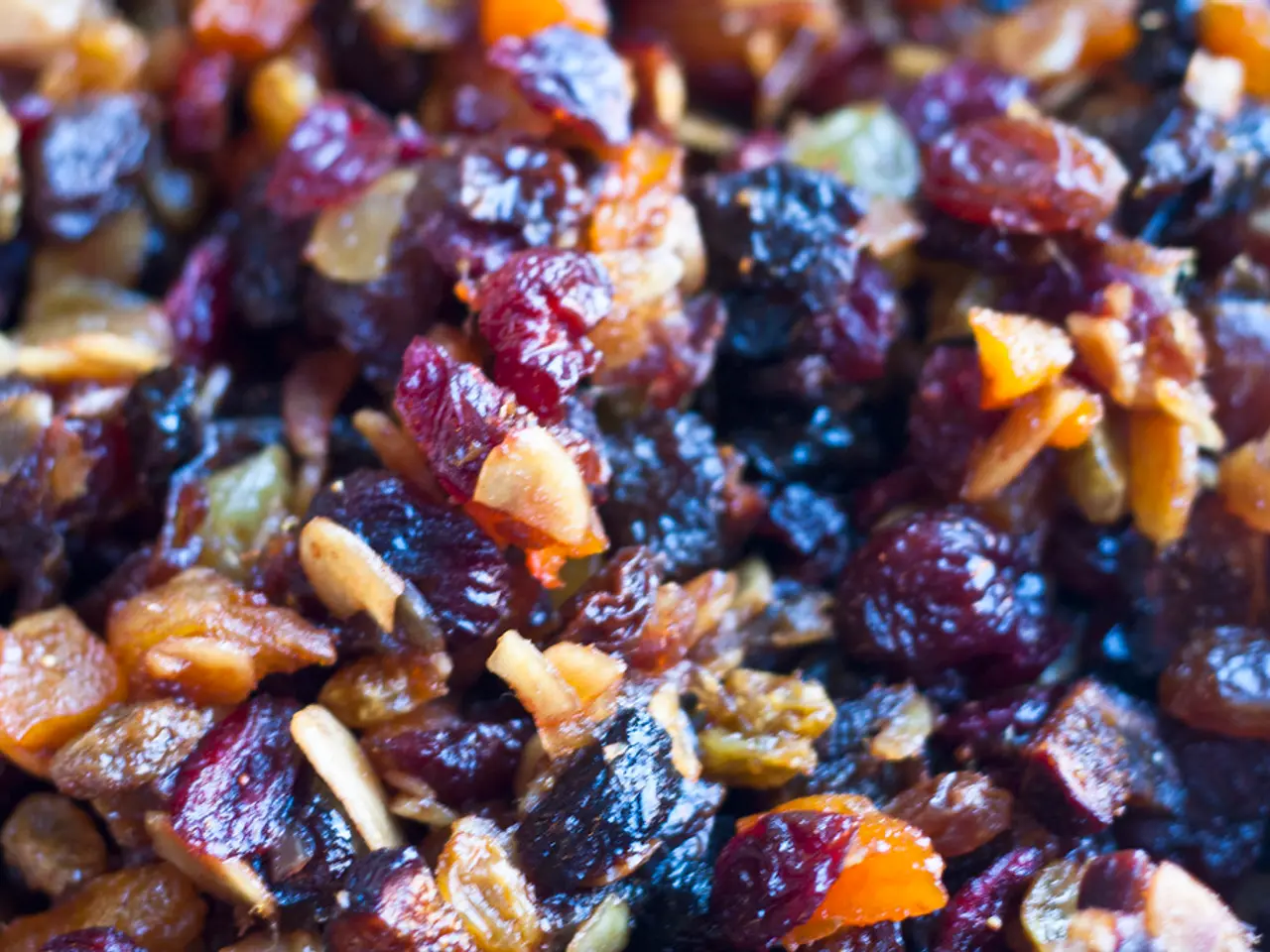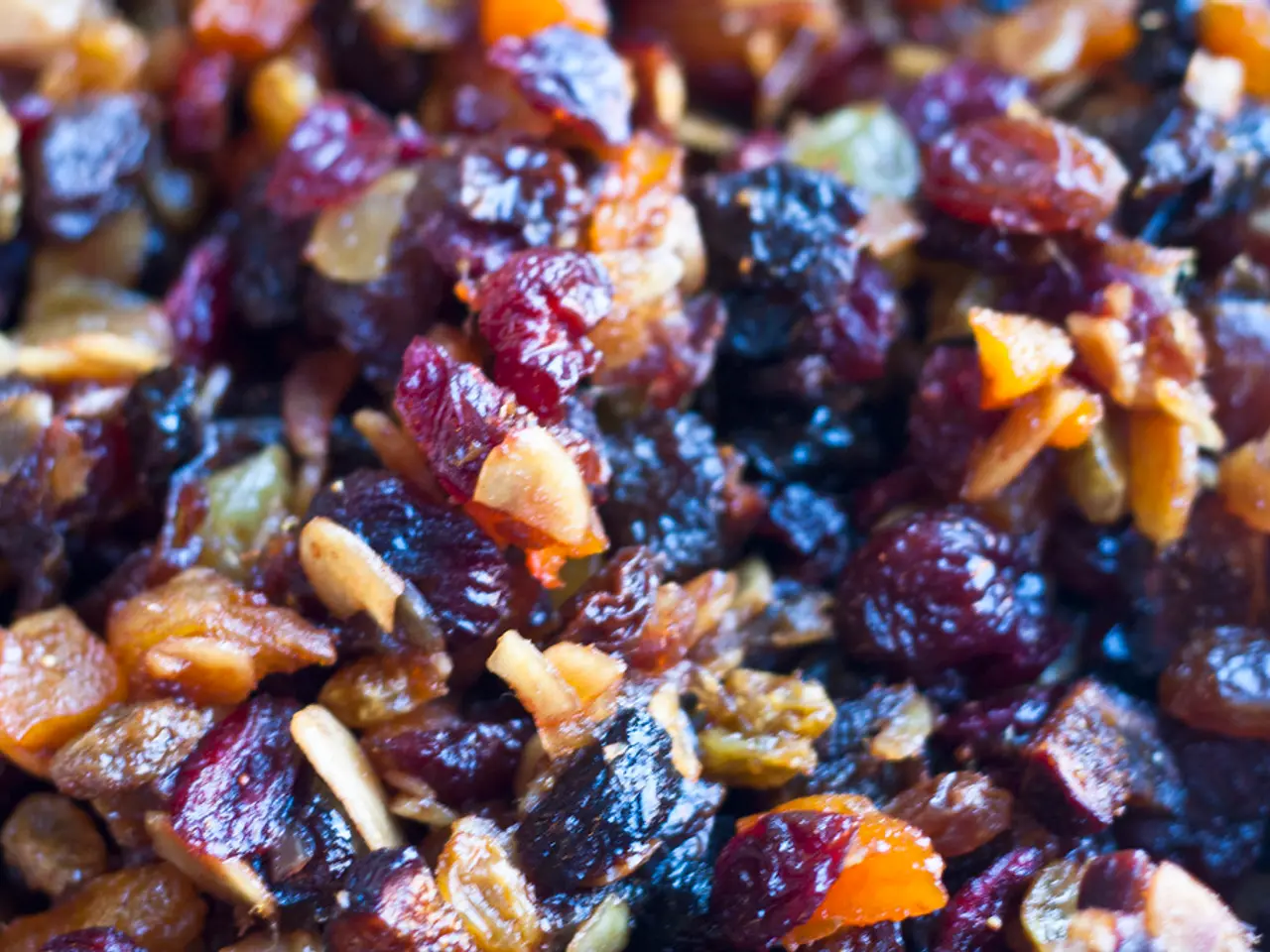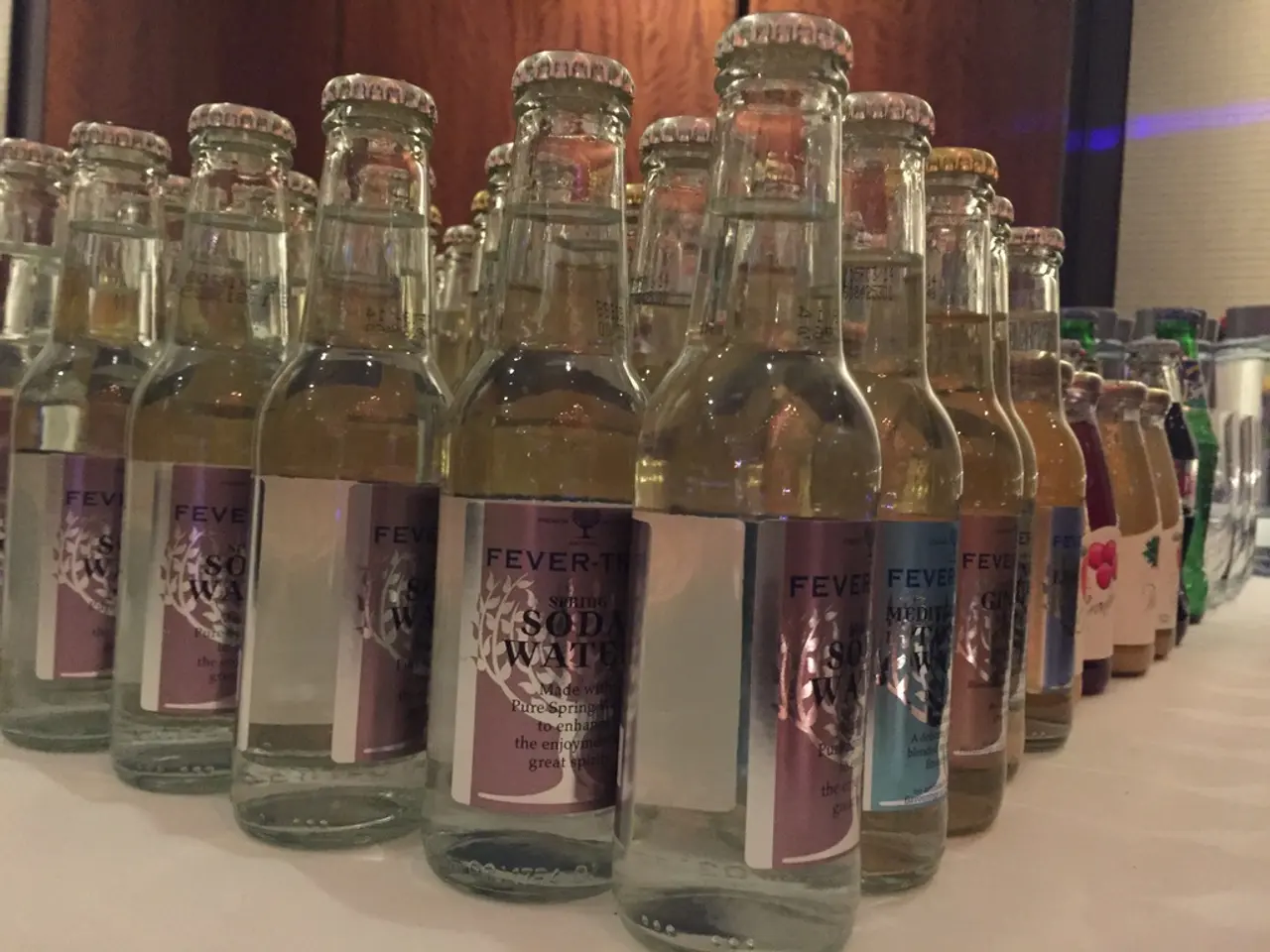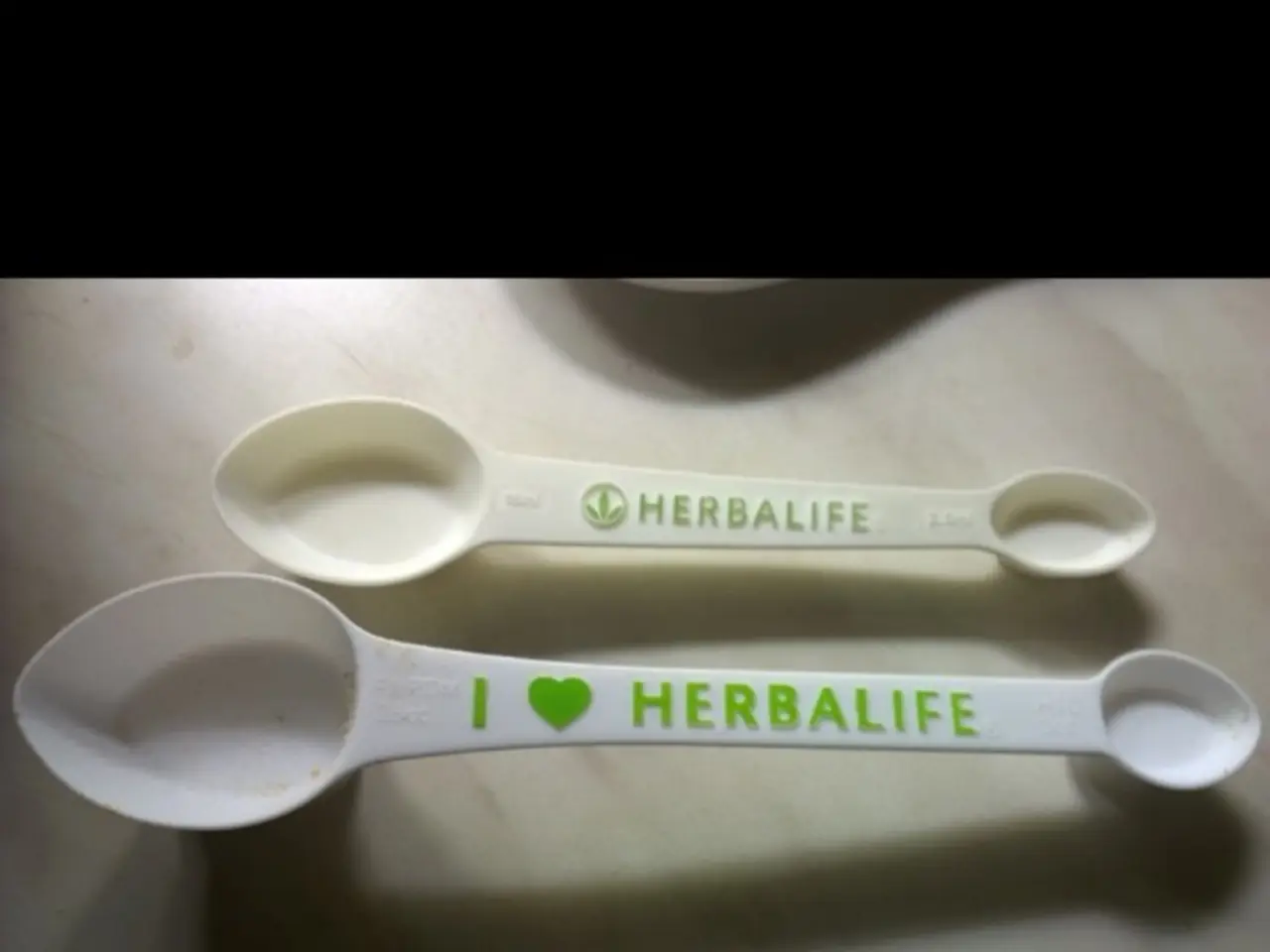Going Meatless for Muscles: A Crash Course on Plant-Based Protein
Achieving a High-Protein Diet Without Consuming Meat: Strategies and Food Sources
Building a high-protein diet with zero meat? It might seem like a challenge, but it's not impossible—and it's more delicious than you'd think! As more folks embrace plant-based diets for health, ethical, or environmental reasons, the demand for plant-based protein has skyrocketed. And the good news? Protein doesn't just come from meat. Mother Nature has got your back with a pantry of scrumptious, nutrition-packed, plant-based protein sources.
When it comes to a high-protein diet, it's tempting to default to meat as the primary source. But fear not! With some know-how and some smart meal planning, you can quickly construct a diet that's not only overflowing with protein but also diverse, delectable, and health-promoting—all without a whiff of meat.
Protein 101: The Importance of the Mighty Macro
Before we dive into the "how" of crafting a meat-free, high-protein diet, let's first chat about the role of protein in our bodies. Protein is an essential macronutrient, meaning it's a critical component of your diet needed in large quantities. It's made up of amino acids, the building blocks of life, that help our bodies:
- Repair and build muscle tissue: Post-workout, protein helps mend muscle fibers, making it a must-have for anyone who's actively pumping iron.
- Support metabolic function: Enzymes and hormones that regulate metabolism are primarily constructed of proteins.
- Boost immune function: Antibodies that fight off infections are made from protein.
- Aid in the production of healthy skin, hair, and nails: Collagen and keratin, which are types of proteins, support these bodily structures.
Given these critical roles, it's clear that getting enough protein in your diet is paramount for maintaining a healthy and well-functioning body.
Powerhouse Plants: Top Contenders for Mighty Muscles
To craft a high-protein diet without meat, set your sights on plant-based foods that are protein powerhouses. Nature's got you covered with a treasure trove of protein-packed options that are both nutritious and satisfying. Here's a run-down of some weightlifting heavyweights:
1. Legumes and Beans
Legumes such as lentils, chickpeas, black beans, and kidney beans are fantastic sources of protein. For example, a cup of cooked lentils provides approximately 18 grams of protein. Add these legumes to soups, salads, stews, or transform them into patties for mouthwatering veggie burgers.
2. Tofu and Tempeh
Tofu and tempeh are both soy-based products that are high in protein and incredibly versatile. Tempeh, which is fermented, contains about 21 grams of protein per 3.5 ounces, while tofu offers around 10 grams per 3.5 ounces. These protein-packed plant essentials can be grilled, stir-fried, blended into smoothies, or crumbled to make a plant-based scramble.
3. Seitan
Also known as "wheat meat," seitan is a high-protein food derived from gluten. One serving, which is roughly 3.5 ounces, contains around 25 grams of protein. This protein-rich food can be grilled, stir-fried, or utilized as a meat substitute in various dishes.
4. Nuts and Seeds
Almonds, peanuts, chia seeds, flaxseeds, and hemp seeds are excellent sources of protein and healthy fats. A quarter-cup of almonds delivers about 7 grams of protein, while two tablespoons of hemp seeds offer around 6 grams. Sprinkle these powerhouses on top of oatmeal, blend into smoothies, or grab a handful as a snack.
5. Quinoa
This ancient grain isn't just high in protein; it's also a complete protein source. That means it contains all nine essential amino acids. One cup of cooked quinoa provides approximately 8 grams of protein. Use it in place of rice, add it to salads, or concoct quinoa bowls for a protein-packed lunch or dinner.
6. Edamame
Edamame (young soybeans) is another high-protein plant-based food. A cup of edamame dishes out about 17 grams of protein. Snack on 'em plain, or add them to salads, bowls, and stir-fries.
7. Plant-Based Protein Powders
Looking for an extra protein boost? Swipe-in plant-based protein powders derived from peas, hemp, or brown rice. One scoop typically delivers around 20 grams of protein, which can be blended into smoothies or shakes for a quick protein lift.
Balancing Your Protein (& Everything Else)
While it's oh-so-easy to get giddy about these high-protein plant-based foods, remember to maintain a balanced diet. Distribute your protein intake evenly across your meals to optimize absorption, muscle repair, and overall health. Here are some easy-to-implement tips for staying balanced:
- Protein at Every Meal: Incorporate a protein source at each and every meal, whether you're tucking into breakfast, lunch, or dinner. Start your day with chia seed pudding, load your lunch salad with beans, or indulge in a tempeh stir-fry for dinner.
- Mix Up Your Protein Sources: To ensure you're getting the full gamut of amino acids, strive to combine different plant-based protein sources throughout the day. For example, pair beans with quinoa or hummus with whole grain pita to form a complete protein.
- Check Your Calorie Intake: While concentrating on protein, don't forget about the rest of your nutrition needs. Ensure that you're consuming balanced, nutrient-rich meals that include healthy fats, carbohydrates, and a plethora of fruits and veggies.
The Perks of a Veggie-Centric Muscle-Building Regimen
Embracing a high-protein diet without meat unlocks benefits beyond muscle growth and energy levels. Among the sweet rewards:
- Weight Management: Protein's satiating properties help keep you feeling fuller for extended periods, which can result in reduced overeating and aid in weight loss or maintenance.
- Improved Digestion: Many plant-based protein sources such as legumes and whole grains are teeming with fiber, important for maintaining a healthy digestive system[1].
- Reduced Risk of Chronic Illness: Plant-based diets often involve lower consumption of saturated fat and cholesterol, which may help reduce the risk of heart disease, high blood pressure, diabetes, and other chronic conditions[2].
- Environmental Impact: Choosing plant-based sources of protein over meat reduces your carbon footprint and supports the preservation of water and conservation efforts[3].
Plant-Powered Dishes to Crush Your Cravings
Building a plant-based, high-protein diet that's delicious and diverse is as simple as pie—er, as simple as grilling up those plant proteins! Here's a smorgasbord of muscle-building meal ideas to help get your taste buds and muscles buzzing:
- Loaded Chickpea Salad Sandwich: Mash chickpeas with avocado, garlic, lemon juice, and spices, then slather it on whole-grain bread for a protein-rich, guilt-free lunch.
- Lentil Dal Curry: Swirl lentils and vegetables in a simmering pot of coconut milk, spices, and herbs for an aromatic, protein-loaded dinner.
- Stir-Fried Tofu with Mixed Veggies: Marinate and sauté tofu with an array of colorful veggies and drizzle with soy sauce for a quick and nutritious meal.
- Hemp seed Smoothie Bowl: Blend hemp seeds, frozen berries, banana, spinach, almond milk, and a spoonful of nut butter for a protein-packed, Instagram-worthy breakfast bowl.
- Edamame Guacamole with Veggie Chips: Mash up edamame, avocado, lime juice, cilantro, and chopped veggies for a protein-rich dip—delish with roasted veggie chips or whole grain crackers.
The Final Scoop: A Muscle-Building, Fat-Burning, Plant-Based Future
Crafting a high-protein diet without meat is not only doable but also overwhelmingly nutritious—boosting muscle growth, energy levels, and overall health, all while being environmentally friendly. With a little imagination and resourcefulness, a plant-based, high-protein lifestyle can quickly become second nature.
By incorporating a bevy of plant-based protein sources into your meals, reaping the benefits of complementary sources, ensuring adequate daily protein intake, and distributing protein consistently throughout the day, you'll set yourself up for steady muscle gains and sustainable health. Happy plant-powered lifting, muscle mavens!
Q&A: Your Plant-Based Muscle-Building Questions Answered
Question 1: Is it possible to get enough protein without eating meat?
Answer: Absolutely! It's entirely possible to obtain sufficient protein on a plant-based diet by integrating various plant-based protein sources like legumes, tofu, tempeh, quinoa, nuts, seeds, and whole grains into your meals.
Question 2: Which plant-based sources provide a complete protein profile, containing all essential amino acids?
Answer: Some plant-based proteins are considered complete proteins, as they contain all nine essential amino acids needed for muscle growth. These include soy products (tofu, tempeh), quinoa, and hemp seeds.
Question 3: Do I need to combine different plant proteins to obtain all essential amino acids at every meal?
Answer: When consuming single plant-based protein sources, it's ideal to combine complementary protein sources throughout the day to ensure your body receives all the essential amino acids it needs. However, don't stress; your body can absorb amino acids over time, so pairing protein sources at every meal isn't an absolute requirement.
Question 4: How much protein should I aim for per day on a plant-based diet?
Answer: Aim for approximately 0.8-1 grams of protein per kilogram of body weight. Daily protein intake for an average adult might equate to 56 grams of protein for a 70-kilogram (154-pound) person, but active individuals, athletes, or those with higher activity levels may require more.
Question 5: Are plant-based protein powders effective?
Answer: Yes, plant-based protein powders can be a clever and convenient addition to your diet to meet your daily protein needs. Simply be sure to pick one with minimal additives, artificial sweeteners, or flavors.
- Protein intake is essential for the repair and building of muscle tissue, metabolic function, immune function, and the production of healthy skin, hair, and nails.
- Legumes like lentils, chickpeas, black beans, and kidney beans, tofu, tempeh, seitan, nuts, seeds, quinoa, edamame, and plant-based protein powders are plant-based sources of protein that can be incorporated into a high-protein diet to achieve muscle growth.
- To ensure a balanced diet, combine different plant-based protein sources, distribute protein intake evenly across meals, and ensure calories, fats, carbohydrates, and fruits and vegetables are included.
- A plant-based, high-protein diet can result in weight management, improved digestion, reduced risk of chronic illness, and reduced environmental impact.
- Indulging in plant-based, high-protein meals such as a loaded chickpea salad sandwich, lentil dal curry, stir-fried tofu with mixed veggies, hemp seed smoothie bowl, or edamame guacamole with veggie chips can cater to cravings while promoting muscle growth and overall health.
- Following a plant-based, high-protein lifestyle does not compromise muscle gains, energy levels, or long-term health, making it not only doable but also nutritious.







